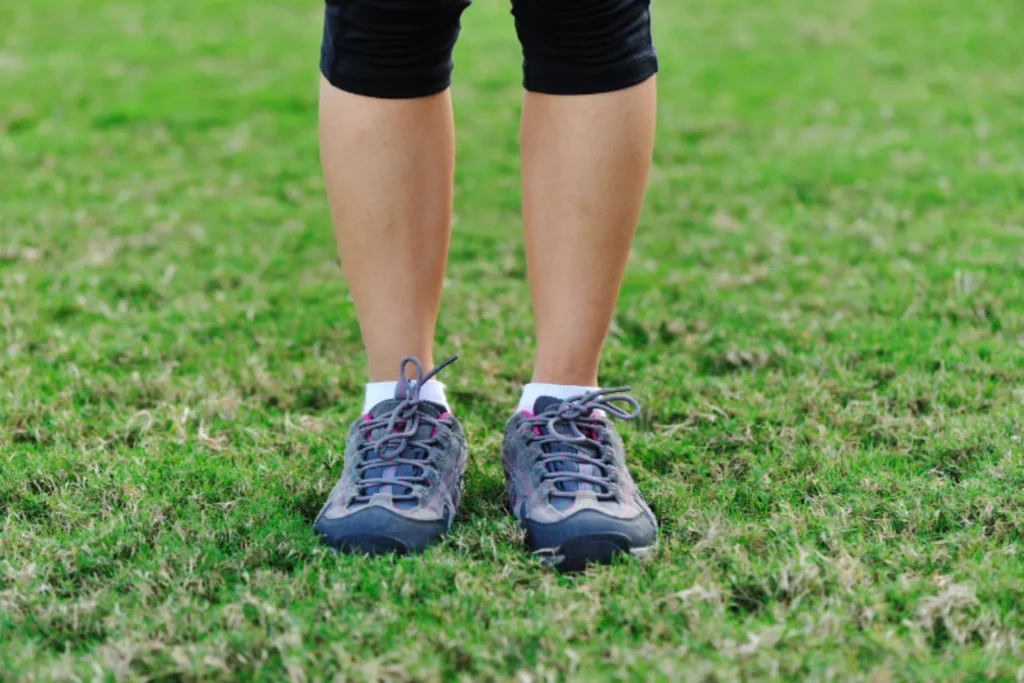If you notice something abnormal growing on your feet, it’s natural to feel concerned. Even medical professionals can have difficulty distinguishing between a verruca and a corn. The best course of action is to seek out the advice of a qualified, HCPC registered podiatrist. There are various treatments available for both corns and verrucas, but before exploring those options, let’s take a closer look at the distinctions between the two conditions.
The difference between a verruca and a corn?
Verrucas
A verruca is a foot disease caused by the Human Papilloma Virus. They are bacterial and often transmitted through contact with an infected area. They are very easily spread in areas like swimming pools, schools and gyms. We advise that you should always wear flip-flops or socks in public spaces; this will help to prevent you from accidentally touching an area that has been in contact with the infection. Verrucas are very contagious and easily contractable. If you notice any abnormalities, warts or spots on your feet, you should have them checked by a podiatrist.
When trying to identify a verruca, you should lookout for a small, black lump with red patches. This is a blood capillary that has become visible through the verruca. In most cases, a verruca will not give you any severe amount of pain; however, in some cases, they have been known to cause discomfort if you have been standing for extended periods.
As mentioned above, avoiding contracting a verruca in the first place is the best thing you can do. To do this, you should avoid changing communal areas and common spaces when you are barefoot. To protect your feet, wear flip-flops or shoes that cover the foot in its entirety. If you already have a verruca, use a “verruca sock” to prevent others from catching it.
Corns
Corns and verruca are two completely different things. Corns are not contagious. They tend to form when the skin is rubbed by ill-fitting shoes or another form of friction. They are most often found on the knuckle of the little toe, where the rubbing and the friction have created a compact, thick patch of dead skin.
How can verrucas be treated?
Getting a verruca can be annoying and can be very difficult to treat. The best form of treatment for verrucae will depend on the infection’s severity. However, over some time, a verruca will naturally clear up on its own.
Acid treatment – If your verrucas haven’t responded to over-the-counter treatment, it might be time for a more robust solution. Podiatrists can apply a lotion with a high acid content to the infected area. This form of treatment is only to be completed by a podiatrist as this acid can be harmful to other, healthy areas of the skin.
Cryotherapy – Cryotherapy can be extremely uncomfortable and a sometimes painful form of treatment. The affected area will be frozen with liquid nitrogen or nitrous oxide. People have found that after treatment, blisters have formed, and they have experienced a burning sensation.
Laser Surgery – This is most often used for larger areas of infection. This is done by heating up the infected area, which works to destroy the infected material at the centre of the verruca.
Verruca Needling – Verruca needling is performed under a local anaesthetic. This process is done by repeatedly puncturing the verruca with a small needle to provoke the body’s natural healing process. It essentially helps the body to actually realise that the verruca is there and exists and uses your immune system to destroy it.
What is a corn on the sole of your foot?
A corn is typically a raised skin lesion that is not contagious and is caused by a build-up of dead skin cells. They appear as a small round bump or a thick patch of hard, flaky or dry skin.
You need to know that a corn is a very common and relatively easy condition to treat. A blade is used to shave the hard skin until it is able to breathe and heal.
If you are suffering from a verruca or a corn, contact us today to book an appointment, we can offer the best advice and treatment possible.
*This blog contains general information about medical conditions and is not advice. You must not rely upon the information in this blog as medical advice. Medical advice should always be sought from an appropriately qualified podiatrist such as ourselves.
